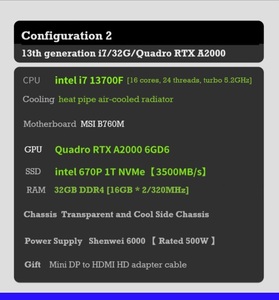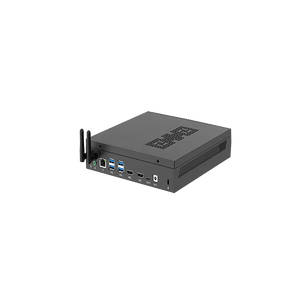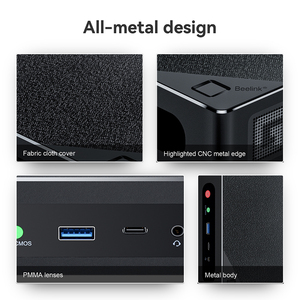(877 products available)






















































































































































































































Video editing PCs are computers tailored for the intensive tasks of processing and producing high-resolution video content. The goal is to ensure smooth editing without lagging. To achieve this, a powerful CPU and GPUs, plenty of ram, and fast storage are ideally suited.
When it comes to video edit PCs specifically made for video production, several types and configurations can be customized to meet different requirements or user preferences.
Desktop video editing computers:
This type is preferred by professional video producers and editor due to its superior performance, upgradability, and larger size/affordable price ratio. Desktop editing PCs also come with multi-core processors, powerful graphic cards, sufficient RAM, and storage space designed to handle complex video editing tasks smoothly.
Laptop-based video editing machines:
These PCs are portable and can be used anywhere. Preferred mostly by editors who spend a lot of time outside the office. While not as powerful as desktop models, the laptop editing PC is still capable of handling most video editing tasks. A multi-core CPU, sufficient RAM, and good quality graphic cards are some of the features of this kind of video editing PC.
Workstation-class video editing computers:
Although they are more expensive than other models, they are the best choice for 4K, 8K, and multi-camera video projects, complex animations, and other resource-heavy tasks. Designed for heavy-duty video editing/other intensive computing tasks, this editing PC features multiple CPUs, a large amount of RAM, professional-grade graphic cards, and high-speed storage. Workstation-class editing PCs are generally built by experts using high-quality, workstation-grade components.
High-End CPU:
The PC has a powerful computer brain. It can think really fast, which helps a lot when editing videos on the computer. The fast computer brain can handle complicated tasks and make sure everything runs smoothly without any stopping.
Lots of Memory:
A video editing computer has lots of memory to help it work better. Memory is important for computers because it helps programs run faster and smoother. The PC is made so that video editing programs won't get stuck or have any problems even when working with videos that are really big or high quality.
Ample Storage Space:
This is because the computer needs enough room to save all the video files, editing programs, and finished projects without running out of space. Also, having a separate hard drive for storing things means the PC can read and write data at the same time while editing videos. This helps the video editing process go faster since everything is accessed from different drives.
Having enough storage space on a video editing PC is important so that it has somewhere to put all the files and programs without getting full. Using different hard drives also helps video editors because it allows the computer to work with multiple disks at once instead of just one drive. This way, everything needed for editing can be accessed from separate drives at the same time.
Good Graphics Card:
A video editing PC needs a strong graphics card to help with video editing, especially when working with 4K videos or other special effects. The graphics card takes some of the work off the computer's CPU, making everything render faster, and previewing the edited videos is important. Video editing also works better and faster if the graphics card supports OpenCL and CUDA, which are like special tools that help computers use their graphics cards more.
Quality Monitor:
An accurate color display is critical for video editors to ensure the colors in their edited videos look right everywhere. Having two monitors is useful for editing videos because one screen can be used to view the raw, unedited clips while the other is used to see the edited final versions. This allows video editors to compare the original footage side by side with their finished edits without switching back and forth between screens.
The video editing PC market has grown significantly over the years, reaching a value of $1.38 billion in 2022. It is projected to grow at a CAGR of 12.7% from 2023 to 2030. With an increase in demand for video content across various industries, professionals are looking for powerful and efficient editing machines. Specific industries rely on video editing PCs to produce compelling and engaging videos. Here are some industries that use video editing PCs and what they are used for:
Other uses for editing PCs include video gaming (gaming enthusiasts use high-performance PCs to record and edit gameplay videos to share online), Event Videography (weddings, parties, and other events), Sports Analysis (professional sports teams use video PCs to study game footage), Security and Surveillance (CCTV footage for investigations or security analysis) and Education (institutions teaching media production courses invest in editing PCs for hands-on training).
Budget:
Budget is the primary factor when selecting a personal computer for video editing, as higher-end configurations usually have a more robust specification and can handle heavy workloads, albeit at a high cost.
Performance:
The performance of a video editing personal computer determines how fast video editing software can be run and the quality of videos rendered. High-performing PCs with the right specifications will handle most workloads and video editing tasks efficiently.
Software Compatibility:
The type of video editing software to be used should be considered when selecting a PC because different software has unique requirements. For instance, choosing a PC with ample RAM and storage is a must if the editing software is to be installed and run efficiently.
Video Editing PC Specifications:
A personal computer for video editing is selected based on its specifications, which include its processor, storage, RAM, and graphic card, among many others. These specifications determine how fast or efficiently videos are rendered, as well as other related tasks.
Upgrade Options:
Apc Video editing should be selected based on its upgrade options. This includes the ways in which memory, storage, and graphic card can be modified, improved, or changed to increase functionality without having to purchase a new PC.
Pre-Built vs Custom Build:
Video editing PC can either be pre-built or custom built, which is mostly considered when selecting a PC. Prebuilt PCs are usually selected based on their specification and required functionality. At the same time, custom build PCs can be built based on parts, most especially the type of graphic card, HDD, SSD, and RAM.
Q1. What is a pc video editor?
A1. A video editing PC is a computer with hardware capable of editing videos smoothly. Key features include a powerful CPU, plenty of RAM, a good GPU, and fast storage. Video editing requires high performance and sufficient memory to handle large video files and complex editing tasks without lag.
Q2. How to choose a PC for video editing?
A2. When selecting a PC for video editing, prioritize a strong CPU like an Intel i7/i9 or Ryzen 7/9, at least 32GB of RAM (64GB or more is better), a high-performance dedicated graphics card, and fast SSD storage, preferably with additional HDD for capacity. Customize or build it to optimize video editing. Ensure it meets software requirements and has enough ports and screens.
Q3. How much RAM is ideal for a video edit PC?
A3. Ideally, a PC for video editing needs a minimum of 16GB of RAM but 32GB or 64GB is better for allowing more editing. Having a large amount of RAM is very helpful, especially when working with high-resolution 4K or 8K videos, complex multi-layered projects, or using multiple applications and programs at the same time.
Q4. Does video editing require a powerful GPU?
A4. Yes, a good and strong GPU is very helpful for a PC that is intended to be used for video editing. A capable graphics card can significantly improve video editing performance by assisting the CPU with tasks like rendering effects, encoding/decoding footage, and previewing timelines. It helps to deliver faster export times and smoother playback for editing software that supports GPU acceleration, especially for high-resolution or heavily processed videos.